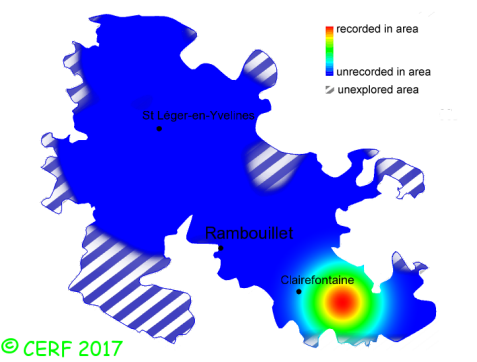| Lepista glaucocana (Bres.) Singer |
|
|
|
|
|
|
The cap is whitish to lilac-blue or pale violet-grey, convex then expanded, fleshy . The cap surface is smooth, not viscid nor sticky. The stem is whitish to pale lilac, same colour as the gills, slightly swollen towards base, without ring. The flesh is white to pale lilac, unchanging; its taste is mild; the odour is minty to mealy or earthy; its texture is fibrous. The gills are lilac pale to purple grey, adnate to emarginate, crowded . The spore print is pale pink. This species is saprophytic. It grows on the ground, in broad-leaved or coniferous woods, meadows, hedges, along paths, on a rather calcareous soil. The fruiting period takes place from September to November.
Distinctive features : entirely lilac-pale to purple-grey, with an odour of menthol (looks like a pallid wood blewit) Lepista glaucocana is quite rare and confined in the forest of Rambouillet, and is infrequent, more generally speaking . | ||
|
page updated on 14/01/18

